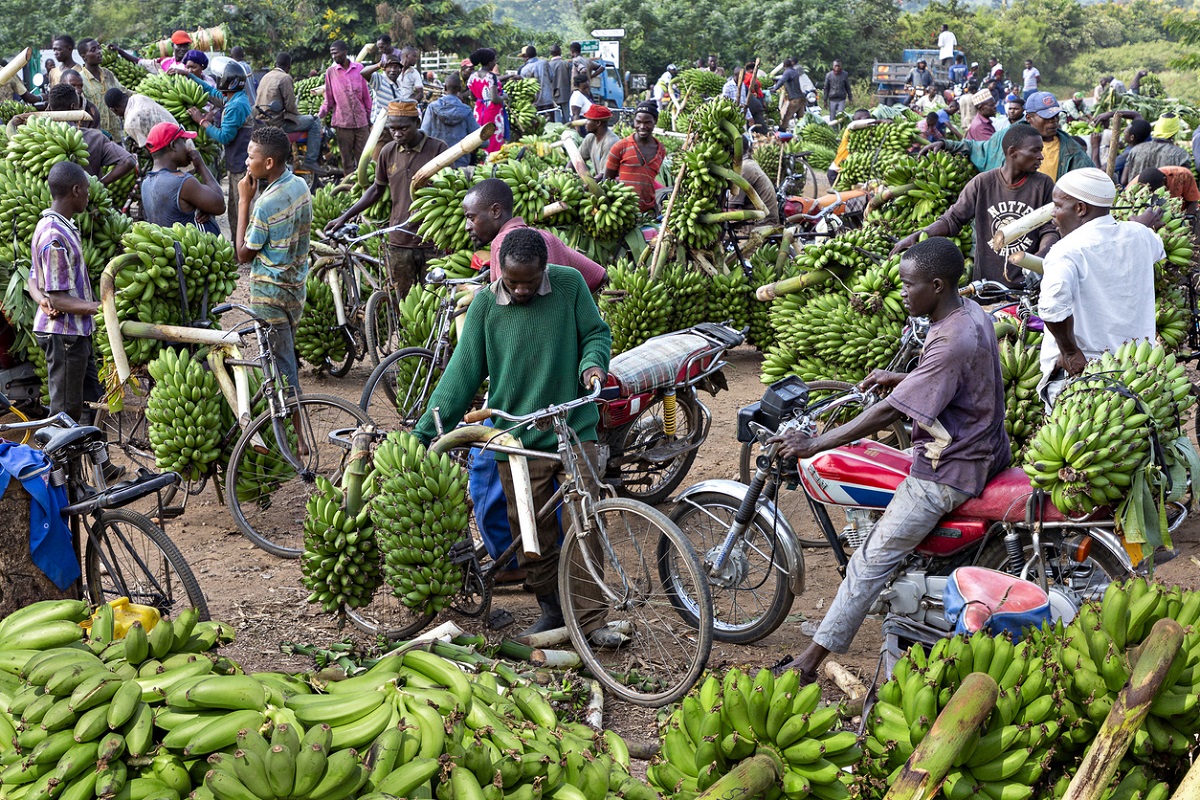
Gene Editing Offers Hope to Endangered African Banana Industry
April 6, 2022| |
Recent advances in gene editing technology to control diseases in banana holds prospects to alleviate the industry, particularly to improve production, food security, and farmers' income.
The banana industry of East Africa, the largest producer and consumer of bananas in the region, is constantly threatened by different banana bacterial diseases like moko, bugtok, blood, and, most destructive, the banana Xanthomonas wilt (BXW). These diseases affect the production of all banana varieties in East Africa which then affects farmers who rely on banana for a living. Though phytosanitary practices are in place to help manage the diseases, these are labor-intensive thus their adoption has been inconsistent.
Gene editing, especially CRISPR-Cas9, can enhance and accelerate the development of disease-resistant banana varieties. There is evidence that genes identified in the BXW-resistant wild type banana Musa balbisiana can be used to develop a banana variety that is resistant to BXW with the aid of CRISPR-Cas9. Knocking out of the banana orthologue of the downy mildew resistance 6 (MusaDMR6) gene was recently conferred to enhance BXW-resistance. This means that it is possible to create resistance against bacterial pathogens using CRISPR-Cas9 by either knocking out the disease-causing susceptibility gene or activating the expression of the plant defense genes. Moreover, this method may prove to be a more immediate solution compared to genetic modification.
Gene editing in bananas is an option worth exploring to control bacterial diseases that greatly affect the banana farmers of East Africa.
Find out more about the synopsis of recent advancements and perspectives on gene editing applications to control bacterial wilt diseases in bananas by reading the full study in Molecular Sciences.
| |
You might also like:
- Fruits of Partnerships: Tissue Culture Banana in Kenya and Tanzania
- Analysis of the Transcriptome of Banana Fruit during Ripening
- Scientists Develop GM Bananas with Longer Shelf-life
Biotech Updates is a weekly newsletter of ISAAA, a not-for-profit organization. It is distributed for free to over 22,000 subscribers worldwide to inform them about the key developments in biosciences, especially in biotechnology. Your support will help us in our mission to feed the world with knowledge. You can help by donating as little as $10.
-
See more articles:
-
Gene Editing Supplement (April 6, 2022)
-
Research and Tools
- Effective CRISPR-Cas9 Method for Citrus Plants Developed
- CRISPR-Kill Prevents Formation of Specific Organs During Plant Development
- Gene Editing Offers Hope to Endangered African Banana Industry
- Using CRISPR, US Firm Near to Creating Hypoallergenic Cats
- Experts Broaden Target Range of CRISPR-Cas Systems
-
Policy Considerations and Approvals
- India Exempts Genome-Edited Plants from Biosafety Assessment
-
Read the latest: - Biotech Updates (December 17, 2025)
- Gene Editing Supplement (December 17, 2025)
- Gene Drive Supplement (February 22, 2023)
-
Subscribe to BU: - Share
- Tweet

